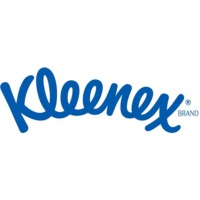
世界百大品牌 – Rank no.90 – US
Top 100 Brand in The World – Rank no.90 – Kleenex – US
History[edit]
The Kimberly-Clark Corporation created the first Western facial tissue in 1924 (it had been in use for centuries before in Japan; see History of facial tissue for details) and originally marketed them as a way to remove cold cream or makeup remover.[1] It was a disposable substitute for face towels. In 1925, the first Kleenex tissue ad was used in magazines showing “the new secret of keeping a pretty skin as used by famous movie stars…”. A few years after the introduction of Kleenex, the company’s head researcher tried to persuade the head of advertising to try to market the tissue for colds and hay fever. The administrator declined the idea but then committed a small amount of ad space to mention of using Kleenex tissue as a handkerchief. By the 1930s, Kleenex was being marketed with the slogan “Don’t Carry a Cold in Your Pocket” and its use as a disposable handkerchief replacement became predominant.[2] In 1943, Kleenex began licensing the Little Lulu cartoon character to popularize the brand.[3]
Kleenex Trademark[edit]
The original Kleenex trademark application at the United States Patent and Trademark Office (USPTO) was filed in the class of Medical, Beauty, & Agricultural Services by Cellucotton Products Company of Neenah, Wisconsin on Saturday, July 12, 1924. The description provided to the USPTO was for, “ABSORBENT PADS OR SHEETS FOR REMOVING COLD CREAM.”
First use for the drawing and stylized word mark was on June 12, 1924 and first use in commerce on June 12, 1924 as well. USPTO granted trademark registration on November 25, 1924. International Cellucotton Products Company officially assigned trademark interest and good will of the business to Kimberly-Clark Corporation on September 30, 1955. Kimberly-Clark Corporation of Neenah, Wisconsin is the current registered owner of the Kleenex trademark.[4]
In the USA, the Kleenex name has become, or as a legal matter nearly has become, genericized: the popularity of the product has led to the use of its name to refer to any facial tissue, regardless of the brand. Many dictionaries, including Merriam-Webster and Oxford, now include definitions in their publications defining it as such.

